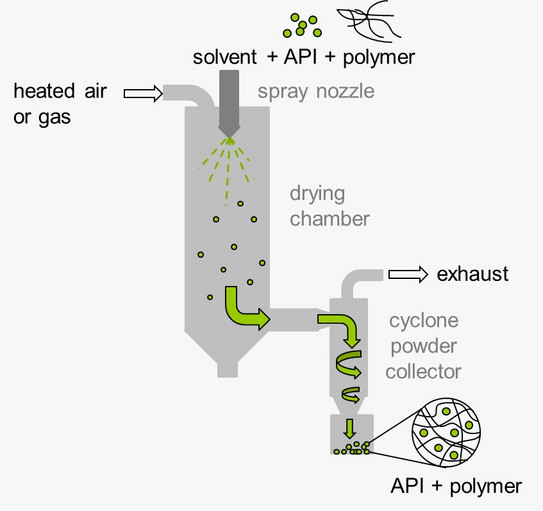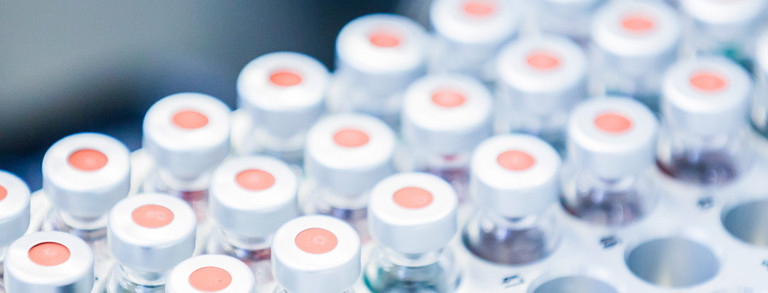Solvent-Induced Phase Separation in Pharmaceutical Formulations
Dr.-Ing. Stefanie Dohrn
Active Pharmaceutical ingredients (APIs) with a poor aqueous solubility present a major challenge in the pharmaceutical industry because of the resulting poor bioavailability. An established strategy to overcome this limitation is incorporating the API in a polymeric matrix, generating a so-called amorphous solid dispersion (ASD). An ASD might be produced via solvent-based processes, e.g. spray drying. The organic solvent used during the preparation might influence decisively the product quality of ASD formulations.
Description
Spray drying is an established technique to formulate ASDs [1]. A systematic thermodynamic investigation of the spraying solvent influence on the ASD formulation has not been carried out, although the solvent is known to affect the ASD product quality [2]. In order to obtain a long-term stable ASD, profound knowledge on the phase behavior of API, polymer and organic solvent is required to find suitable organic solvents and identify optimal production process parameters. In this project, the influence of organic solvents will be investigated via experiments and thermodynamic modeling using the Perturbed-Chain Statistical Associating Fluid Theory (PC-SAFT).

References
| [1] | A. Paudel, Z. A. Worku, J. Meeus, S. Guns, G. Van den Mooter: "Manufacturing of solid dispersions of poorly water soluble drugs by spray drying: Formulation and process considerations" International Journal of Pharmaceutics, vol. 453 pp. 253–284, 2013. |
| [2] | E. Costa, J. Priotti, S. Orlandi, D. Leonardi, M. Lamas, T. Nunes, H. Diogo, C. Salomon, M. Ferreira: "Unexpected solvent impact in the crystallinity of praziquantel/polyvinylpyrrolidone formulations. A solubility, DSC and solid-state NMR study" International Journal of Pharmaceutics, vol. 511, pp. 983–993, 2016. |







